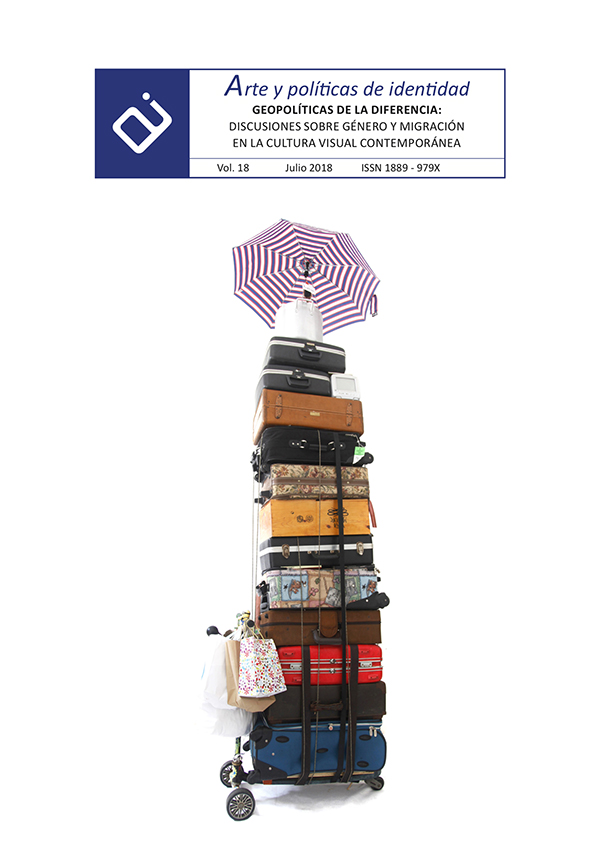Ser persona en la sociedad del conocimiento y el espectáculo
Aprendiendo a vivir, pensar y comunicar más allá de los espejos
Resumen
La Sociedad del Conocimiento propone un modelo cognitivo que procura referencias estables de la naturaleza, el ser humano y el universo, mientras que si pensamos en la Sociedad del Espectáculo hay un modelo que procura que como espectadores no nos establezcamos en ninguna imagen ofreciéndonos referentes temporales, identidades efímeras que la industria, la moda, la publicidad y el aburrimiento nos hacen desear constantemente. En este hábitat cultural, mediático y contradictorio intentamos comunicarnos, pero ¿cómo encontrar lo que puede definirnos en medio de tanta información? ¿cómo alcanzar una imagen especular en un mundo metamórfico?, y, en consecuencia: ¿cómo ser personas? En esta situación, como veremos en este artículo, el rostro y el cuerpo se significan en un mismo territorio de relación y aparecen la disipación, la monstruosidad, la desconexión, la descomunicación y la práctica de la borrosidad como estrategias de construcción de identidad, pasando de la representación a la cognición. Al final de este recorrido se proponen seis ideas y soluciones a la construcción de la identidad desde la perspectiva del educador artístico, enlazando en las propuestas conocimiento, entretenimiento y comunicación.
Descargas
-
Resumen1433
-
PDF719
Citas
Bachelard, G. (1994). El agua y los sueños. Madrid: Fondo de Cultura Económica.
Bachelard, G. (2003). La poética del espacio. Madrid: Fondo de Cultura Económica.
Barthes, R. (1984). La muerte del autor. En El susurro del lenguaje. Barcelona: Paidós
Barthes, R. (2000). Mitologías. Madrid: Siglo XXI Editores.
Baudrillard, J. (1998). El éxtasis de la comunicación. En Hal Foster (ed.)La posmodernidad. Barcelona: Kairós.
Bauman, Z. (2016). Modernidad líquida. Madrid: Fondo de Cultura Económica.
Castells, M. (1996). The Rise of Network Society. Oxford and Malden, Mass.: Blackwell Publishers.Dawkins, R. (1976). El gen egoísta. Madrid: Editorial Labor.
Debord, G. (2000). La sociedad del espectáculo. Valencia: Pre-textos.
Debray, R. (1994). Vida y muerte de la imagen: Historia de la mirada en Occidente. Barcelona: Paidós.
Deleuze, D. (2006). Post-scriptum sobre las sociedades de control.Polis: Revista latinoamericana. 13. Recuperado de https://journals.openedition.org/polis/5509
De Ventós, R. X. (1984). Las metopías. Metodologías y Utopías de nuestro tiempo. Barcelona: Editorial Montesinos.
Drucker, P. F. (1992). The age of discontinuity. Guidelines to our changing society. New Jersey: Transaction Publishers.
Drucker, P. F. (1999). La sociedad poscapitalista. Buenos Aires: Sudamericana.
Echeverría, J. (1994). Telépolis.Barcelona: Ediciones Destino.
Eco, U. (1984). Obra abierta. Barcelona: Planeta-Agostini.
Foucault, M. (2001). Los anormales. Madrid: Akal ediciones.
Foucault, M. (1999). ¿Qué es un autor?. EnEntre filosofía y literatura. Obras esenciales I. Barcelona: Paidós.
Gubern, R. (2007). Del bisonte a la realidad virtual: la escena y el laberinto. Barcelona: Anagrama.
Le Corbusier (1973): El Modulor: ensayo sobre una medida armónica en la escala. Buenos Aires: Editorial Poseidón.
McLuhan, M. y Powers, B.R. (2002). La aldea global. Barcelona: Gedisa Editorial.
Moraza, J. L. (2012). Arte en la era del capitalismo cognitivo. Madrid: Museo Nacional Centro de Arte del Reina Sofía.
Orwell, G. (2005). 1984. Barcelona: Ediciones Destino.
Penfield W. y T. Rasmussen T. (1950). The cerebral cortex of man: a clinical study of localization of function. New York: The Macmillan Company.
Prigogine, I. y Nicolis, G. (1997). La estructura de lo complejo. Madrid: Alianza Editorial.
Roberts, A. E., y Pastor, B. (2001). Diccionario etimológico Indoeuropeo de la Lengua Española. Madrid: Alianza Editorial.
Shelley, W. M. (1997). Frankenstein. El moderno Prometeo. Barcelona: Ediciones Grupo Zeta.
Sterh, N. (1994). Knowledge Societies. Londres: Sage.Vigouroux, R. (1996). La fábrica de lo bello. Barcelona: Editorial Prensa Ibérica.
UNESCO (2005). Hacia las sociedades del conocimiento. París: Ediciones UNESCO.
Unión Europea (2009). Conclusiones del Consejo y de los Representantes de los Gobiernos de los Estados miembros reunidos en el seno del Consejo de 26 de noviembre de 2009 sobre el desarrollo del papel de la educación en un «triángulo del conocimiento» que funcione plenamente: Diario Oficial de la Unión Europea.
VV. AA. (1989). Entender la pintura: Picasso. Nº 2. Barcelona: Orbis Fabbri
Wagensberg, J. (2003). Ideas sobre la complejidad del mundo. Barcelona: Tusquets Editores.
Wagensberg, J. (2005). La rebelión de las formas. O cómo perseverar cuando la incertidumbre aprieta. Barcelona: Tusquets Editores.
Works published in this journal are subject to the following terms:
- The Service of Publications from the University of Murcia (publishing house) keeps the published works’ copyrights, and favors and allows the reuse of these works under the license indicated in point 2.
- Works are published in the journal’s online edition under the license Creative Commons Reconocimiento-NoComercial-SinObraDerivada 3.0 España(texto legal). They can be copied, used, disseminated, transmitted and publicly exhibited, as long as: i) the author and original source of publication are cited (journal, publishing house and work’s URL); ii) they are not used for commercial purposes; iii) the existence and specifications of this license are mentioned.
3. Conditions for auto-file. It is allowed and encouraged that authors share electronically their pre-print version (the pre-reviewed version) and /or post-print version (the reviewed and accepted version) of their Works before the publication, since it promotes its circulation and dissemination. RoMEO color: green.










